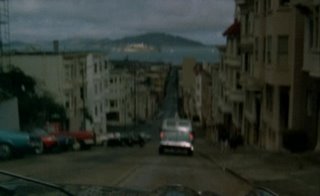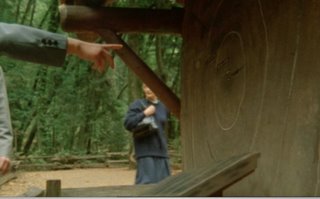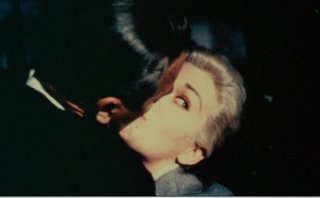Memory #2, Love #4, Hitchcock #1
He wrote me that only one film had been capable of portraying impossible memory—insane memory: Alfred Hitchcock's Vertigo. In the spiral of the titles he saw time covering a field ever wider as it moved away, a cyclone whose present moment contains motionless the eye.
In San Francisco he had made his pilgrimage to all the film's locations: the florist Podesta Baldocchi, where James Stewart spies on Kim Novak—he the hunter, she the prey. Or was it the other way around? The tiles hadn't changed.
He had driven up and down the hills of San Francisco where Jimmy Stewart, Scotty, follows Kim Novak, Madeline. It seems to be a question of trailing, of enigma, of murder, but in truth it's a question of power and freedom, of melancholy and dazzlement, so carefully coded within the spiral that you could miss it, and not discover immediately that this vertigo of space in reality stands for the vertigo of time.
He had followed all the trails. Even to the cemetery at Mission Dolores where Madeline came to pray at the grave of a woman long since dead, whom she should not have known. He followed Madeline—as Scotty had done—to the Museum at the Legion of Honor, before the portrait of a dead woman she should not have known. And on the portrait, as in Madeline's hair, the spiral of time.
The small Victorian hotel where Madeline disappeared had disappeared itself; concrete had replaced it, at the corner of Eddy and Gough. On the other hand the sequoia cut was still in Muir Woods. On it Madeline traced the short distance between two of those concentric lines that measured the age of the tree and said, “Here I was born... and here I died.”
He remembered another film in which this passage was quoted. The sequoia was the one in the Jardin des plantes in Paris, and the hand pointed to a place outside the tree, outside of time.
The painted horse at San Juan Bautista, his eye that looked like Madeline's: Hitchcock had invented nothing, it was all there. He had run under the arches of the promenade in the mission as Madeline had run towards her death. Or was it hers?
From this fake tower—the only thing that Hitchcock had added—he imagined Scotty as time's fool of love, finding it impossible to live with memory without falsifying it. Inventing a double for Madeline in another dimension of time, a zone that would belong only to him and from which he could decipher the indecipherable story that had begun at Golden Gate when he had pulled Madeline out of San Francisco Bay, when he had saved her from death before casting her back to death. Or was it the other way around?
Sans Soleil d: Chris Marker (1982)